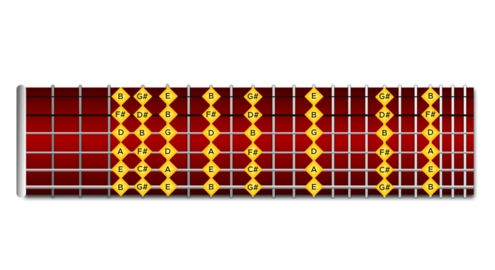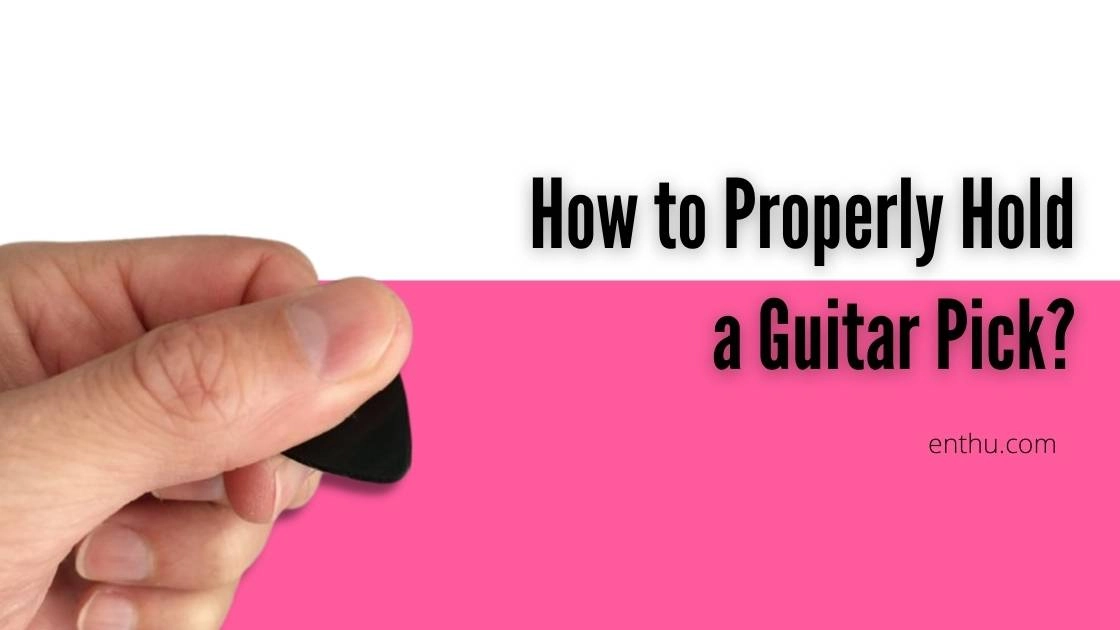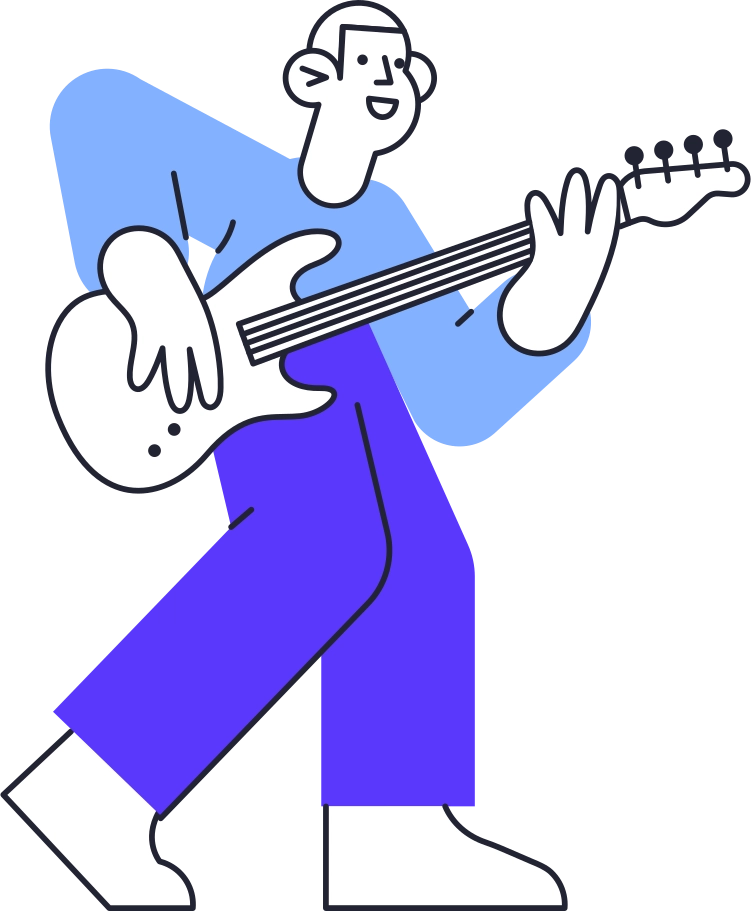Guitars are surprising, no doubt about that. What if I told you there is a certain thing you have played every time on the guitar but didn't know about it? Such is the charm of guitar harmonics.
Every time you play a note on the guitar, it creates a harmonic. You must wonder what harmonics are and how to do harmonics on guitar? Well, let's find out.
What Are Harmonics
Harmonics are basically sound waves with specific frequencies that are integer multiple of fundamental notes. The lowest sound frequency is the fundamental tone frequency. So, twice and thrice that of the fundamental tone frequency is the second harmonic and third harmonic, respectively.
I understand that it's a bit complicated, but let's make it easier for you with a simple example. Suppose the fundamental tone is a C note, then the second harmonic will be the C note, one octave higher. Similarly, the third harmonic will be the G note, an octave, and a perfect fifth note higher.
Lastly, the 4th will be the C note again, two octaves later. So, the harmonics will be C, C, G, C, E, C, and A♭ sequencing from low to high. In simpler terms, you can say that harmonics are byproducts of fundamental notes.
1. What Are Guitar Harmonics
A guitar harmonic is created by dampening a note to produce a high-pitched sound, often compared to a bell-like chime. Whenever you play an open string, you hear the fundamental note. For instance, if you pick the A string (5th string), you will hear the fundamental A note.
Although whenever you play a note (in this case, pluck a string), the guitar's string creates vibrations from the nut to the bridge, thus creating many harmonics or overtones. This phenomenon is the result of short frequencies along the fretboard.
Normally, you only hear the fundamental note when you pluck a string, as identifying the overtones requires excellent aural skills. It naturally creates a harmonic whenever you pluck a string on the guitar.
There are numerous ways to generate a guitar harmonic. You can play harmonics that naturally occur on the fretboard as well as artificial harmonics. In fact, you can play artificial harmonics anywhere on the fretboard if you know the techniques.
2. The Science Behind Harmonics
Do you know how a harmonic is produced? Well, let's get back to high school physics for the answer. The harmonics are created because of the string's length. When you use your finger to strike a string, you manipulate the vibration of the string.
Whenever you are playing a natural harmonic, the string gets split up into halves, thirds, fourths, fifths, and sixths. Suppose you are playing a harmonic at the 12th fret; you are splitting the particular string in half. Similarly, if you play at the 7th or 19th fret, you split the string into thirds.
Harmonics played at 7th, and 19th frets generate exactly the same note. Similarly, if your guitar has 24 frets, the 5th and 24th frets will also produce the same notes. The 12th fret is an exception, as it divides the notes into halves, which is a large subsection of the particular string.
Waveform of a normal note |  |
|---|---|
Same note an octave higher | |
Harmonic 1/3rd division of wavelength | When you pluck a string gently, your |
When you pluck a string gently, your finger or the pick works as a pivot point by enabling the string to diversify its vibrations in halves, thirds, fourths, and so on. It means the mere touch of your finger cuts the wavelength of the note in half, thirds, and fourths.
If you are familiar with guitar classes, you may have heard the guitar teacher asking to tune the A string in 440. The number '440' is the frequency of the A note on the high E (1st) string at the 5th fret.
Now, increasing the frequency to 880 (double 440) will generate the A note, but an octave up. I think you can understand the relation between wavelength and frequency. Frequencies are inversely proportional to wavelengths.
Wavelength = 1/frequency Simply speaking, if you cut the wavelength in half, the frequency will double up. Similarly, if the wavelength is reduced to ⅓, then the frequency will become thrice than before.
3. Why Do All The Strings Make Different Sounds
All the guitar strings are the same length. Then why do they sound so different? Actually, the blame is (or blessing) on the tension of the strings. The string tension actually decides how the string will sound in our ears.
The act of tuning is merely a task of manipulating the tension of the strings. When you tune the strings of a guitar, you also manipulate the tension; the diameter of the string also gets changed.
In fact, if you tighten the string, the diameter gets smaller and makes the string high-pitched.
4. How To Do Harmonics On Guitar
Natural Harmonics Natural harmonics are also known as open string harmonics. Whenever you touch a string or pluck it, it naturally generates open string harmonics. Let's try to do it consciously.

Natural Harmonics on Guitar First, place your finger gently on a string at the exact spaces the image is showing you. Beware of pressing/plucking the string down. Also, don't hold any frets; there's a reason it's called open string harmonics. Ideally, you should only touch the string with your fingertip. Here's a table of how each harmonic note responds to the frets.
Strings | 5th Fret | 7th Fret | 12th Fret |
1st String (High E) | E | B | E |
2nd String (B) | B | F# | B |
3rd String (G) | G | D | G |
4th String (D) | D | A | D |
5th String (A) | A | E | A |
6th String (Low E) | E | B | E |
5. Artificial Harmonics
Playing artificial harmonics, AKA fretted harmonics, can be difficult at times because you have to be very careful while playing one. It requires perfect fretting of a note and very delicate plucking of the string that is twelve frets up the primary note you are playing.
Besides that, you must pluck the string gently to generate a fretted note harmonic. There are two main types of artificial harmonics.
Pinched Harmonics
According to experienced guitarists, pinched harmonics are the most complicated to master. You will need a specific picking technique combined with an experienced and steady picking hand.
Before jumping into playing one, you should focus on how to hold a guitar pick properly and pluck a string. Here's a trick for you - Hold the pick in a way that barely plucks the string gently and immediately touches the particular string with your fingertip and also the pick.

That's the tricky part of playing harmonics. You have to be very precise while gently plucking the string with your fingertip and the pick almost at the same time.
Hit The Sweet Spot You should also know exactly where to pluck at the string. If you don't pluck at the 'sweet spot,' the harmonic will sound like a dull and blunt note. Your thumb and the pick should strike the string at the middle point of the bridge and the fret you are holding. |
Quick Note: There are several sweet spots on a string for both open and fretted string harmonics. Naturally, the plucking point is directly proportional to the length of the string.
2. Artificial Harmonics Technically
All the harmonics you play on the acoustic guitar are artificial harmonics. However, this technique is also popularly known as an artificial harmonic. This method of playing the harmonics requires a gentle touch on the sweet spot as well.
For playing artificial harmonics, you need to touch the particular string gently with your index finger and then pluck it with a pick or your pinky finger. Make sure you use the fingertip; otherwise, the harmonics will sound blunt.
Touch Harmonics This is another variation of the tap harmonics. These harmonics involve playing a note at a particular position on the fretboard and then touching the particular note one octave up. |
3. Tune Your Guitar
Using Harmonics Yes, you have read that right. You can tune your guitar by using harmonics. However, it might be a bit difficult at first, but once you grow an ear for the harmonics, you can easily do it on your own. Follow these instructions to tune your acoustic or electric guitar using harmonics:
First of all, pluck the 5th fret harmonic note of the low E string and then play the 7th fret harmonic note of the A string. These two notes should sound the same. If they don't, it's time to tune your guitar.
Now, follow this pattern - play the 5th fret harmonic note of the A string and the 7th fret harmonic note of the D string.
Next, compare and tune in the fifth fret harmonic note of the D string and the 7th fret harmonic note of the G string.
Make sure you match the G string 5th fret harmonic with the B string 7th fret harmonic.
Now, match the 6th string (low E string) 7th fret harmonic with the B string harmonic on the 12th fret.
Lastly, tune the low E string (6th string; thickest) harmonic on the 12th fret with the high E string (1st string; thinnest) harmonic on the 7th fret.
Quick Tip Always make sure that you are tuning upwards. It means when you are adjusting the tuning pegs, deliberately make the tune go down to the note below and tune-up until it hits the right note. |

More Resources


Conclusion
I know it's been hard on you. But it doesn't seem this hard when you are playing the guitar. I would suggest you leave everything now and pick up your guitar. Try to play the harmonics all by yourself. Don't forget to check out the theory every once in a while.
FAQs
1. What is the 12th fret harmonic?
According to music theory, 12 fret octaves are one octave up from the open string note, and the harmonics on the 5th fret are two octaves up from the open string note.
2. Is harmonic tuning accurate?
Yes, harmonic tuning is accurate. In fact, harmonic tuning is one of the most foolproof methods of tuning a guitar. However, tuning your guitar with harmonics can be tough and complicated. This technique allows you to level up to 16 individual overtones of the notes to tune the string.
3. Can you do pinch harmonics without a pick?
Yes, you can. However, it is tough to bring the same effect with your finger, as the fingertips are blunt. If you want to do it anyway, cut your fingernails and try picking with the narrow part of your fingertip.








Comments